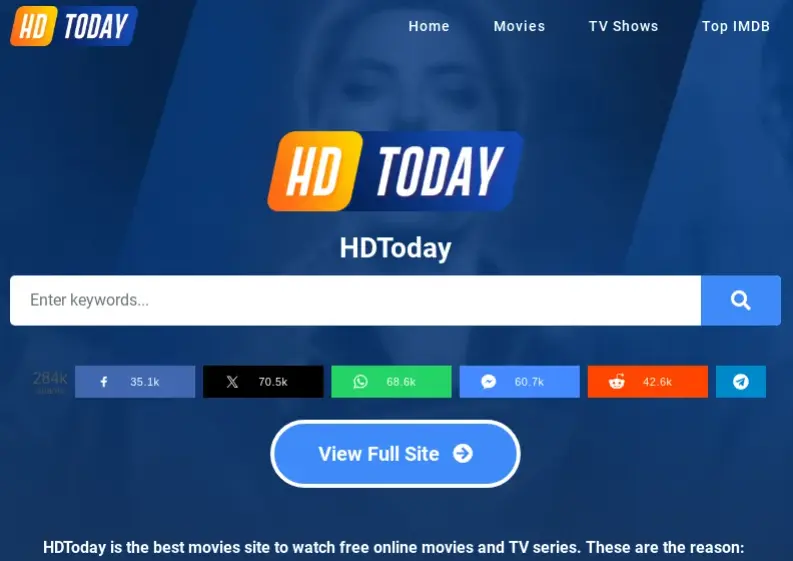Enjoying a well furnished and effectively facilitated club might seem trivial, but unnecessary club delays leads to reduced productivity, efficiency, and misplaced inventories and resources. Understanding productivity in terms of club operations in relation to member lodgings and club facilities is essential in setting up a club and keeping it running efficiently and effectively. Football club and operations management have shifted to web based systems which enhance the management and coordination of club resources.
Advancements in sporting technology have made it possible to streamline the management of Football Clubs and other sporting activities. Football clubs are now able to pass resources and maintain stellar operational management productivity that was unprecedented. These operations are maintained and facilitated using web management systems designed and adapted with football clubs in mind.
Using computer management systems, an integrated management and operations web system designed specifically for football clubs, has made club operations management possible and easy to use for club staff and resources, shifting football operations leverage to web based systems.
Player Management Systems – Manage each individual’s player statistics, record player performance, and track personal information.
Match Scheduling Tools – Organize and set times for fixtures, training periods, and primary events for the club.
Communication Platforms – Organize team members, distribute information, and formulate activities.
Financial Management – Manage the club’s finances, establish player wages, and prepare the budget.
A FC26 web application has state-of-the-art functionalities required by contemporary football organizations. These are considered indispensable for both professional and recreational football organizations globally. The FC 26 service provides club management with comprehensive and seamless club management solutions.
Principal Features of Modern Club Management Software
Contemporary football club management software is equipped with features that facilitate club management. For instance, a standard EA web application consolidates player databases, match performance analysis, and communication tools for seamless club management.
Real-time Data Tracking. Access real-time monitoring of player performances, match metrics, and training sessions.
Cloud Storage. Club data can be stored securely in the cloud and retrieved on any device connected to the internet.
Automated Reporting. Get automated, in-depth reports on the team, finances, and player performance.
Multi-user Access. Different staff members can be assigned the right to use the system within predetermined limits.
FC26 provides the expectation of what clubs can attain from management software. Such software combines various functions that, in the past, required multiple software programs and laborious manual processes. Digital transformation within the management of football clubs has changed the way we operate. Our administrative processes have become 60% more efficient due to the web apps.
Benefits of Using Web-Based Club Management. Compared to traditional management, web-based Club Management provides better organization, communication, and performance in all areas of the club.
Enhanced Organization – Centralize all club information in one location.
Enhanced Communication – Provide instant updates to players, employees, and teammates.
Enhanced Decision Quality – Analyze extensive data to determine the best course of action on your team’s game plan.
Enhanced Cost Reduction – Administrative and paper-based process expenses will be reduced.
Clubs are able to stay in touch with players and staff all the time with the help of the EA companion features. It allows for real-time communication of relevant information, schedule modifications, and club-wide notifications.
When clubs transfer to internet-based management solutions, they attain 65% savings in administrative efficiency.
Factors To Consider To Identify the Best Web App for Managing Your Club
When selecting your club management software, it is crucial to understand your club’s needs. Different features are offered on various platforms; therefore, recognizing your needs will help narrow down the potential options.
Evaluate Your Needs – Determine what is most important for your club to operate more efficiently.
Roots Are Money Related- Choosing software that meets your financial needs and considerations.
Evaluate User Experience- Pick software that is easy to use for all members within your group.
Assess for Integration- Confirm that software can integrate with your existing tools and workflows.
Different FIFA web applications could serve different purposes. Do diligent research to understand what web applications are aligned to your club’s daily operational needs and long-term vision.
Strategies for Implementing Club Management Systems
There must be concrete plans to implement a new web application. Clubs will need to prepare staff and set the new behavioral expectations that will come with the new system capabilities to conduct their work.
Train Staff- Ensure every staff member is trained to use the new system.
Data Migration Planning- Plan and set secure methods for the current club data to be integrated into the new system.
Implementing New Features Incrementally- Avoid overwhelming the new system users by implementing features one after the other, rather than all at once.
Scheduled Functional Updates- Mark your calendar for updates on the application that come with the added features and necessary security.
Moving to digital management tools is a significant advance for football clubs. Proper implementation is necessary to take full advantage of the seamless management tools offered by their chosen system.
Reduction in scheduling disagreements by 42% post introduction of automated systems for fixture management
Improved team communication through in-app messaging features as reported by 89% of club managers
Advanced Features in Contemporary Football Applications
Newer club management software has the ability to cater to the more intricate and sophisticated operational challenges. These more sophisticated and integrated tools empower clubs to achieve and maximize performance for operational activities on and off the pitch.
Performance Analytics – Comprehensive player and team performance metrics analysis.
Injury Treatment – Tracking the fitness of the player, scheduling appointments with the doctor and managing recovery.
Financial Forecasting – Predicting future expenditures, income, and budgetary needs
Social Media Integration – Fan engagement and online reputation management of the club.
In response to the needs of sports clubs, web development continues to evolve. Sports clubs are able to utilize web applications powered by artificial intelligence which provides insights that club managers did not have access to in the past.
Concern of Security and Privacy of Club Data
Due to the sensitive nature of club management data, the top management applications should include robust security framework. Contemporary systems employ sophisticated discriminative and multiple forms of security to protect sensitive player data, club finances, and strategic plan.
All Information is Encrypted – Advanced techniques to protect sensitive data.
Strong User Authentication – Enforcement of complex passwords and additional verification layers.
Consistent System Updates – Frequent updates to systems for keeping up with new security requirements.
Data Backups – The automatic systems will have data recovery features for instances of system failure.
Integration with Existing Club Systems.
Successful web applications must assimilate with the club’s infrastructure. Within this integration, existing business processes will not require alteration and the entire system replacement is unnecessary, avoiding excessive expenses.
Database Connectivity – Integration and access to existing player data and historical data.
Integration with Financial Systems – Linking accounting packages and payment gateways.
Communication Systems – Integrated email, instant messaging, and social media accounts.
Equipment Management – Linking inventory control systems for uniforms, equipment, and facilities.
Effective integration will harness the strengths of both the innovative and the existing systems to deliver a comprehensive management system.
Future Trends in Football Club Management Technology
The field of sport management is continuously evolving and developing. Understanding these trends enables clubs to prepare for the imminent shifts and make informed investment choices involving technology.
The Use of Technology in Decision Making – Artificial Intelligence based predictive analytics.
Training in Fully Immersive VR – Virtual reality is a game-changing technology for sport training.
Player Transfer and Contract Administration via Blockchain – Technology guarantees the secure transfer of players and contract management.
IoT – Performance Monitoring through Networked Devices.
Advancements in the mentioned areas will promote the rethinking of club management in the future and increase the focus on improvement and innovation.
Cost Implications for Club Management Systems
Cost is a necessary consideration when it comes to the selection of software for the management of football clubs. Understanding the scope of your technology investment will help clubs ensure it is financially sustainable and adopt commands software.
Subscription Models – Contemporary software comes with both annual and monthly subscriptions.
Implementation Charges – One-off payments for system installation and data migration.
Training Costs – For employees to appropriately use the systems, training packages are prepared.
Maintenance Fees – Regular system upkeep and updates during the entirety of the contracted period.
Clubs are able to optimize their returns because of astute financial management. For clubs of varying sizes and budgets, most software systems provide flexible pricing. Consequently, organizations across the spectrum can access professional management solutions.
Training and User Adoption Strategies
For the successful execution of any new management system, it is critical to have user training and system implementation strategies. Club staff must be fully supported as the organization shifts from legacy systems to integrated computing systems.
Integrated Training Programs – Tailored learning sessions for each user category
Continuous Support Systems – Ongoing support during the transition period
Collection of User Feedback – Feedback collection aimed at maximizing system usage and user satisfaction
Performance Monitoring – Monitoring system usage and identifying areas for additional support
When clubs dedicate time and resources towards effective training programs, change management becomes less difficult. Employees aware of the system’s advantages are motivated to adopt the new technology and deploy it properly.
Monitoring Success of Club Management Software
Monitoring the utilization of online club management software should include an open, regular, and evaluative discourse. Clubs should determine KPIs and ensure the club management software assesses them to measure whether the technology is delivering value for the club.
Administrative Time and Paperwork Reduction. Time Savings Measures.
Enhanced Communication. Response and message delivery assessment.
Data Accuracy. Improvement tracking in record keeping and information management.
Satisfaction Indices. Structured and ongoing surveys to establish staff/player levels of satisfaction.
Systematic Monitoring. Clubs identify and improve their optimization. Positive feedback and increased outcomes/self-claimed satisfaction from system optimization.
Concluding Statement.
Lastly, modern web applications to improve operational processes provide seamless management. FC Web Apps give the clubs almost everything they need in the contemporary sports environment from player administration to budget planning.
Desirable club management technologies unleash the potential for complete organization, communication, and effective monitoring of performance. These clubs are harnessing management technologies to improve their operational processes, thereby ensuring long-term competitiveness and success.
FAQs
In what ways does an FC Web App differ from general management software?
FC Web Apps are customized for football clubs and include exclusive features such as player tracking, match scheduling, and performance evaluation, which standard management software does not offer.
How long does it take to implement a new club management system?
In most clubs, implementing a web-based management system, including staff training and system data migration, is completed within a 4- to 6-week timeframe.
Can web applications offer offline club management?
Modern applications offer offline capabilities for core club management functions, with automated synchronization taking place once internet connectivity is restored to ensure seamless club operations.

















